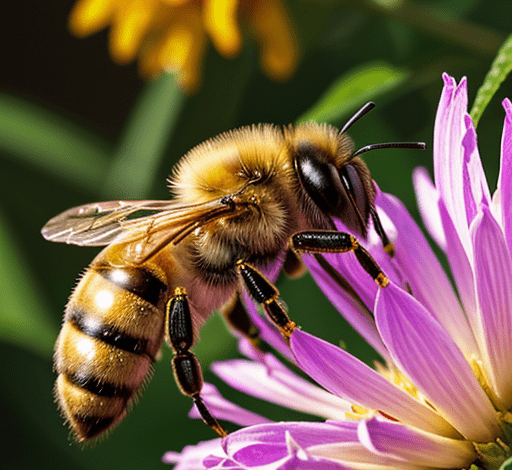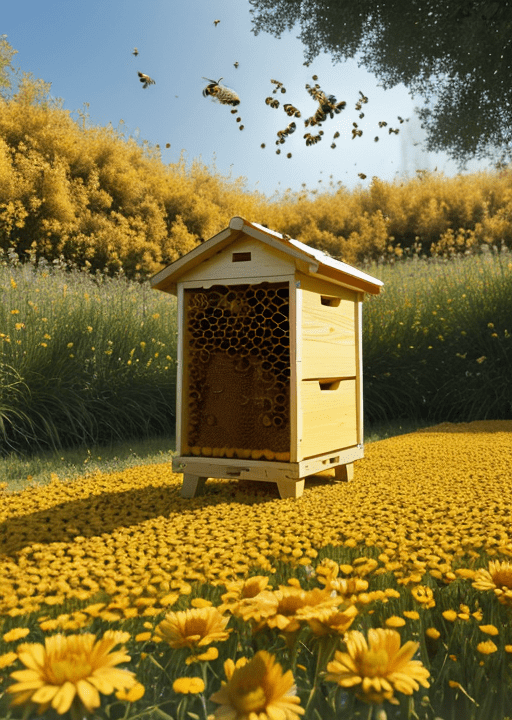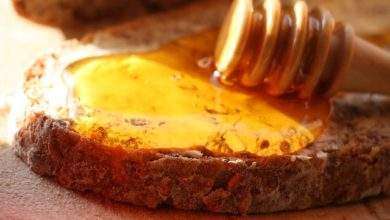Do Bees Sleep?

Bees, those buzzing creatures responsible for pollinating our gardens and producing honey, have long fascinated scientists and nature enthusiasts alike. While we often associate sleep with mammals or birds, have you ever wondered if bees sleep too?
In this article, we dive into the intriguing world of bee sleep to shed light on this lesser-known aspect of their lives.
Research and Scientific Studies on Bee Sleep Patterns
Scientists have long been captivated by the sleep patterns of bees and have conducted numerous studies to unravel their sleep habits. One groundbreaking study conducted at the University of Illinois revealed that bees do indeed have a form of sleep. Researchers observed that bees displayed sleep-like behaviors, including reduced body and antenna movement, extended periods of immobility, and decreased responsiveness to external stimuli. These findings suggest that bees experience a state akin to sleep, although different from that of mammals.
Furthermore, experiments with electrodes attached to bees’ brains have shown distinct patterns of brain activity during periods of rest. These patterns resemble those seen in other sleeping animals. These discoveries highlight the parallels between bee sleep and sleep in more complex organisms.
Understanding the Concept of Sleep in Insects
While sleep in mammals is characterized by distinct sleep stages, such as REM (rapid eye movement) and non-REM sleep, the concept of sleep in insects is not fully understood.
Insects, including bees, lack eyelids, which raises the question of how they experience sleep as humans do. However, studies indicate that insects undergo patterns of rest and inactivity, which parallel sleep in mammals.
Sleep in insects may serve various essential functions, such as memory consolidation, energy conservation, and overall restoration. Just like humans, bees may require periods of rest to maintain optimal cognitive functioning and well-being.
Observations of Bees within the Hive during Resting Periods
The hive provides a sanctuary for bees to rest and recharge. Observations of bees within the hive have revealed that they congregate together during resting periods, often forming clusters or hanging motionless from the hive walls. These resting periods are crucial for individual bees and play a pivotal role in maintaining the hive’s overall productivity.
Interestingly, during these periods of rest, some worker bees take on particular roles to ensure the smooth functioning of the hive. For example, bees called “guard bees” assume the responsibility of protecting the hive entrance, while others engage in grooming behaviors to keep their bodies clean and free from parasites. These activities suggest a complex organization and division of labor even during times of rest.
Activity Changes during Day and Night in Bees
Bees demonstrate distinctive activity patterns that vary throughout the day and night. Studies have found that bees are generally more active during daylight hours when floral resources are abundant and hive maintenance tasks are essential. During this time, bees engage in foraging, pollination, and nest construction activities.
In contrast, nighttime presents a different scenario for bees. While they may exhibit periods of reduced activity, they are not entirely immobile or dormant. Instead, bees exhibit a state known as “resting” during the night, maintaining a level of responsiveness to environmental stimuli. This resting period allows bees to conserve energy and prepare for the upcoming day’s bustling activities.
Duration and Patterns of Bee Sleep

Here, we will delve into the fascinating world of bee sleep, exploring its duration, patterns, and the factors that influence them. Additionally, we will discuss the role of circadian rhythm in regulating bee sleep patterns and examine how sleep cycles differ across various phases of a bee’s life.
Factors Influencing Bee Sleep Duration
Similar to other creatures, numerous factors influence the duration of bee sleep. These factors can vary from environmental conditions to individual characteristics. Some key factors affecting bee sleep duration include:
1. Environmental Factors:
- Temperature: Bees are ectothermic organisms, meaning their body temperature is regulated by external conditions. Cooler temperatures often lead to longer sleep durations.
- Light Intensity: Bees are diurnal and mainly active during daylight hours. Reduced light intensity during the night promotes longer sleep durations.
2. Colony Duties:
- Age: The age of a bee plays a significant role in its sleep duration. Younger bees typically require more sleep compared to older, foraging bees.
- Role and Responsibilities: Bees perform specific tasks within the hive. Bees engaged in more labor-intensive duties may require shorter and more frequent sleep bouts.
The Role of Circadian Rhythm in Bee Sleep Patterns
Circadian rhythms, internal biological clocks that follow a roughly 24-hour cycle, play a crucial role in regulating bee sleep patterns. Bees show clear circadian rhythms, exhibiting consistent sleep-wake cycles. Key aspects of the relationship between circadian rhythm and bee sleep include:
1. The Suprachiasmatic Nucleus (SCN):
- The SCN, located in the bee’s brain, acts as the central pacemaker for their circadian rhythm.
- It receives input from external cues such as light and temperature, helping regulate the sleep-wake cycles of bees.
2. Melatonin:
- Melatonin, a hormone involved in regulating sleep, also influences bee sleep patterns.
- Levels of melatonin fluctuate throughout the day, signaling to bees when it is time to rest or be active.
Sleep Cycles in Different Phases of a Bee’s Life
The duration and patterns of bee sleep vary across the different phases of their life. Notably, bees undergo distinct roles and responsibilities as they age, impacting their sleep cycles. Let’s explore these phases:
1. Larval Stage:
- Larval bees spend most of their time asleep, as their primary focus is growth and development.
- Sleep patterns during this phase tend to be longer and less influenced by circadian rhythms.
2. Pupal Stage:
- During this transformative phase, bees undergo metamorphosis.
- Sleep durations decrease compared to the larval stage, as the pupa’s cellular activities increase.
3. Adult Stage:
- As adult bees, sleep patterns become more influenced by circadian rhythms and colony duties.
- Foraging bees generally have shorter and more fragmented sleep bouts compared to bees performing hive tasks or those transitioning to different roles.
Benefits and Significance of Bee Sleep
Honeybees exhibit complex sleep patterns that have long fascinated scientists. Now, we will delve into the restorative functions of sleep in bees, the effect of sleep on their performance, memory, and learning abilities, and the overarching importance of sleep for maintaining optimal hive function.
- Restorative Functions of Sleep in Bees
Just like humans, bees require sufficient rest to rejuvenate their bodies and ensure proper functioning. During sleep, bees undergo various restorative processes that contribute to their overall health and well-being. These processes include muscle repair, energy restoration, and neural regeneration. By allowing time for these restorative functions, bees can continue their vital roles within the hive.
- Effect of Sleep on Bee Performance, Memory, and Learning Abilities
Sleep is not merely a passive state for bees; it actively enhances their performance, memory, and learning abilities. Studies have shown that sleep deprivation in bees leads to impaired motor skills, reduced foraging efficiency, and diminished navigational capabilities.
Additionally, sleep-deprived bees exhibit compromised memory consolidation, hindering their ability to learn and remember important tasks and locations within their environment. Thus, adequate sleep is crucial for maintaining peak performance in bees.
- Importance of Sleep for Maintaining Optimal Hive Function
Bees live in highly organized societies where every individual has a specific role to play. The significance of sleep extends beyond individual bees to the overall functioning of the hive. Sleep plays a vital role in regulating the division of labor within the colony, ensuring that each bee fulfills its designated tasks, such as nursing, foraging, and guarding the hive.
Without sufficient sleep, bees may fail to carry out their duties effectively, leading to disruptions in hive operations and potentially jeopardizing its survival.
Conclusion
While bees may not sleep in the same way we do, they do require periods of rest for their well-being and optimal hive function. Bee sleep patterns vary among different species and are influenced by internal and external factors. Understanding the significance of sleep in bees sheds light on the complex lives of these industrious creatures and highlights the remarkable interconnections between various species within ecosystems. So the next time you see a bee buzzing around, remember that even they need their beauty sleep.
FAQ:
Do bees really sleep?
- Yes, bees do have periods of rest that resemble sleep. While their sleep patterns are different from humans, they exhibit behavior that indicates a need for rest and rejuvenation.
How do bees sleep?
- Bees sleep by reducing their activity levels and metabolic rates during resting periods. They often cluster together inside the hive or choose individual nests or flowers to rest on, depending on the species.
Do bees dream or have any sleep-related behaviors?
- Given the differences in their brain structure, bees do not exhibit dreaming as humans do. However, they may have sleep-related behaviors such as antennae cleaning or repositioning while resting, which help maintain their sensory organs.
Do all bees in the colony sleep at the same time?
- No, bees in a colony do not sleep simultaneously. Due to their division of labor, different bees will rest at various times, ensuring that essential tasks like foraging, nursing larvae, and defending the hive are constantly attended to.
How long do bees sleep?

- The duration of bee sleep can vary depending on various factors. Younger bees tend to sleep longer, while older bees, with more responsibilities, sleep for shorter periods. The sleep duration is also influenced by environmental conditions and the natural day and night cycles.
Can bees sleep during the winter?
- Bees enter a state of reduced activity during the winter, commonly known as “torpor.” While not exactly sleep, this period allows bees to conserve energy and survive the colder months. However, they are not entirely inactive and may occasionally move within the hive.
Can bees sleep outside the hive?
- Yes, bees can sleep both inside and outside the hive. Some bees may rest on flowers or branches during warm weather if it’s safe, while others prefer to return to the hive for rest. The choice depends on their role and environmental conditions.
Do worker bees sleep more than the queen bee?
- Worker bees do not necessarily sleep more than the queen bee. Both worker bees and the queen require rest, but the queen may have fewer opportunities for rest due to her reproductive responsibilities.
What happens if bees don’t get enough sleep?
- Sleep deprivation negatively affects bee performance, memory formation, and learning abilities. Adequate sleep is vital for maintaining optimal hive function and overall bee well-being.
Why is it important to study bee sleep?
- Studying bee sleep provides valuable insights into the complex lives of bees and their role in ecosystems. Understanding sleep patterns and requirements helps in developing effective conservation strategies to protect these crucial pollinators.




